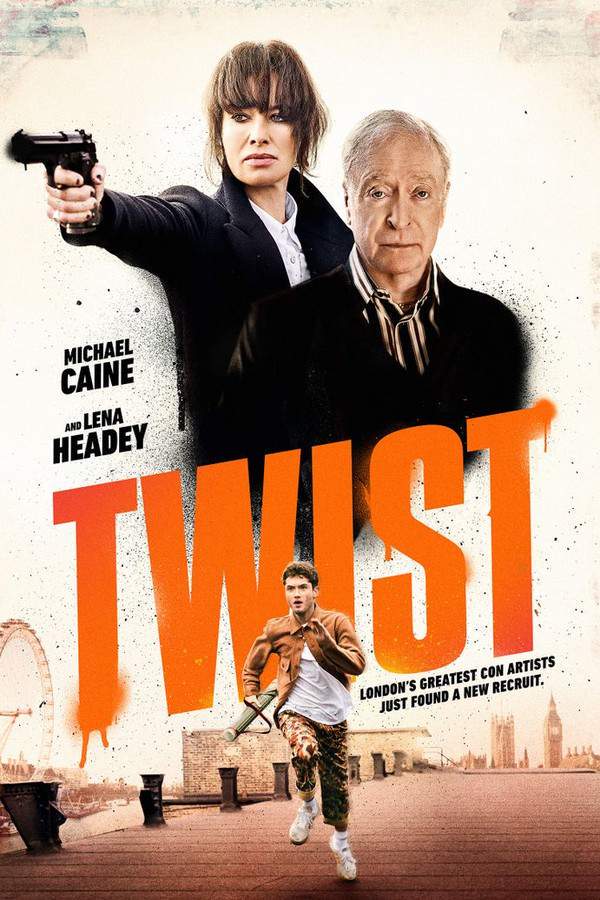
Imaginary Friend
Year: 2012
Runtime: 99 mins
Language: English
Director: Richard Gabai
Haunted by a traumatic childhood and an abusive father, Emma found solace in an imaginary friend. Now an artist battling mental illness, she lives with her husband, Brad, and attempts to maintain a semblance of normalcy. However, the return of her childhood imaginary friend signals a disturbing loss of control. As Emma desperately tries to protect her marriage and convince Brad she is stable, she takes extreme actions to confront and banish the recurring presence.
Warning: spoilers below!
Haven’t seen Imaginary Friend yet? This summary contains major spoilers. Bookmark the page, watch the movie, and come back for the full breakdown. If you're ready, scroll on and relive the story!
Imaginary Friend (2012) – Full Plot Summary & Ending Explained
Read the complete plot breakdown of Imaginary Friend (2012), including all key story events, major twists, and the ending explained in detail. Discover what really happened—and what it all means.
Emma Turner, Lacey Chabert, is a talented artist haunted by a childhood imaginary friend named Lilly, a coping mechanism rooted in the abuse she endured from her father, who murdered her mother before ending his own life. She inherits a substantial fortune through a trust, but there’s one catch: the money only goes to her if she stays married. This condition sets the stage for a carefully crafted web of manipulation.
Her husband, Brad, Ethan Embry, is a psychiatrist who uses Emma’s imagined Lilly to push her toward instability, nudging her toward a mental institution so he can access the trust without the burden of caring for her. He surrounds himself with accomplices, chief among them Molly, his assistant who is also his mistress; Molly, Angeline-Rose-Troy, plays a crucial role in maintaining the illusion and the scheme. Brad presents himself as a devoted husband to everyone around him, but his deception runs deep: he lies to Emma’s doctor, Dr. Kent, Jacob Young, claiming that Emma harms herself to speed up her institutionalization, while quietly orchestrating a growing dependence on pills she is made to take.
As manipulation tightens its grip, Emma’s belief in Lilly persists. Lilly reappears not as a child’s toy but as an adult ally who offers Emma a form of companionship and reassurance, something Emma has not felt in years. Despite Emma’s protests that Lilly is a product of her past, the adult Lilly’s presence becomes a source of real comfort, empowering Emma to seek truth rather than be pulled deeper into the lie.
Brad, wary of losing control, pressures hospital staff to institutionalize Emma as quickly as possible and arranges a fresh power of attorney to maintain his grip on the trust. The tension reaches a turning point when Emma hosts dinner one night and unexpectedly tells Brad that she has killed Lilly, sparking a dangerous unraveling of Brad’s carefully constructed reality. Brad responds with interrogation and paranoia, pressing Emma to reveal how Lilly’s supposed murder occurred.
Meanwhile, Brad’s fixation extends to a woman named Brittany—a former patient who suffered from dissociative identity disorder two years earlier and with whom he had an affair. Brad tries to contact Brittany, but she remains elusive: his calls go unanswered, his searches at her home yield nothing, and even Brittany’s file seems to have vanished from his office. The story then pivots as the truth about Lilly and Brittany begins to surface.
It is revealed that Brittany had been posing as Lilly as part of Brad’s scheme, but her perspective shifts out of sympathy for Emma. Brittany allies with Emma to expose Brad’s web of deceit and manipulation, turning the tables on the husband who sought to weaponize psychology and healthcare against his wife. The plan succeeds: Brad is arrested and committed, freed from Emma’s life as a puppet and restored to a state of accountability.
In the aftermath, Emma and Brittany forge a genuine friendship, built on trust rather than manipulation, and promise to stay connected no matter what comes next. The narrative resolves with Emma stepping out from under Brad’s shadow, embracing a future where her autonomy and the truth are finally allowed to stand on their own.
Last Updated: October 09, 2025 at 16:10
Explore Movie Threads
Discover curated groups of movies connected by mood, themes, and story style. Browse collections built around emotion, atmosphere, and narrative focus to easily find films that match what you feel like watching right now.
Psychological Gaslighting Thrillers like Imaginary Friend
Stories where reality is weaponized against a vulnerable protagonist.If you liked the mind games and psychological abuse in Imaginary Friend, explore more movies like it. These thrillers feature characters whose reality is manipulated, creating a tense and anxious viewing experience focused on survival and uncovering the truth.
Narrative Summary
Narratives in this thread typically follow a protagonist, often isolated or vulnerable, who is targeted by a manipulator. The plot revolves around the gradual erosion of the victim's confidence in their own mind, building towards a climactic moment of revelation where the truth is exposed and power is reclaimed.
Why These Movies?
Movies are grouped here for their shared focus on the psychological terror of gaslighting. They create a specific, intense mood of suspense and claustrophobia, driven by character-based conflict rather than physical action, and often culminate in a cathartic confrontation.
Movies with Cathartic Power Reversals like Imaginary Friend
Dark journeys where the underestimated victim outsmarts their oppressor.For viewers who loved the satisfying ending of Imaginary Friend, this list collects similar movies where an underestimated victim turns the tables. Discover stories of clever revenge and survival where the journey is dark but the conclusion is hopeful and just.
Narrative Summary
The narrative pattern involves a protagonist enduring significant manipulation or abuse, often while being perceived as weak or unstable. A key turning point—sometimes aided by an unexpected ally—allows them to devise a plan that uses the antagonist's own schemes against them, leading to a triumphant and clever victory.
Why These Movies?
These movies are united by a specific emotional arc: from helplessness and despair to empowerment and victory. They share a dark tone and heavy weight, but are defined by their focus on intelligent strategy leading to a profoundly satisfying and cathartic conclusion for the viewer.
Unlock the Full Story of Imaginary Friend
Don't stop at just watching — explore Imaginary Friend in full detail. From the complete plot summary and scene-by-scene timeline to character breakdowns, thematic analysis, and a deep dive into the ending — every page helps you truly understand what Imaginary Friend is all about. Plus, discover what's next after the movie.
Imaginary Friend Timeline
Track the full timeline of Imaginary Friend with every major event arranged chronologically. Perfect for decoding non-linear storytelling, flashbacks, or parallel narratives with a clear scene-by-scene breakdown.

Characters, Settings & Themes in Imaginary Friend
Discover the characters, locations, and core themes that shape Imaginary Friend. Get insights into symbolic elements, setting significance, and deeper narrative meaning — ideal for thematic analysis and movie breakdowns.

Imaginary Friend Spoiler-Free Summary
Get a quick, spoiler-free overview of Imaginary Friend that covers the main plot points and key details without revealing any major twists or spoilers. Perfect for those who want to know what to expect before diving in.

More About Imaginary Friend
Visit What's After the Movie to explore more about Imaginary Friend: box office results, cast and crew info, production details, post-credit scenes, and external links — all in one place for movie fans and researchers.




























